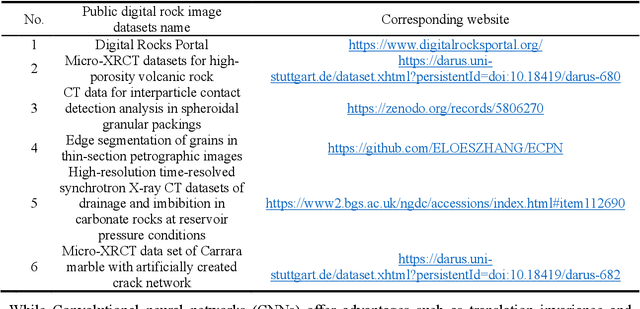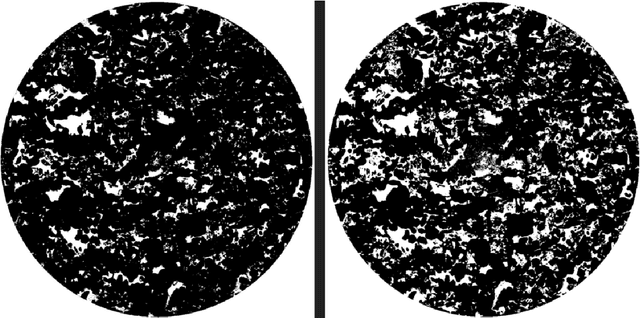Enhancing Rock Image Segmentation in Digital Rock Physics: A Fusion of Generative AI and State-of-the-Art Neural Networks
Paper and Code
Nov 10, 2023



In digital rock physics, analysing microstructures from CT and SEM scans is crucial for estimating properties like porosity and pore connectivity. Traditional segmentation methods like thresholding and CNNs often fall short in accurately detailing rock microstructures and are prone to noise. U-Net improved segmentation accuracy but required many expert-annotated samples, a laborious and error-prone process due to complex pore shapes. Our study employed an advanced generative AI model, the diffusion model, to overcome these limitations. This model generated a vast dataset of CT/SEM and binary segmentation pairs from a small initial dataset. We assessed the efficacy of three neural networks: U-Net, Attention-U-net, and TransUNet, for segmenting these enhanced images. The diffusion model proved to be an effective data augmentation technique, improving the generalization and robustness of deep learning models. TransU-Net, incorporating Transformer structures, demonstrated superior segmentation accuracy and IoU metrics, outperforming both U-Net and Attention-U-net. Our research advances rock image segmentation by combining the diffusion model with cutting-edge neural networks, reducing dependency on extensive expert data and boosting segmentation accuracy and robustness. TransU-Net sets a new standard in digital rock physics, paving the way for future geoscience and engineering breakthroughs.
 Add to Chrome
Add to Chrome Add to Firefox
Add to Firefox Add to Edge
Add to Edge